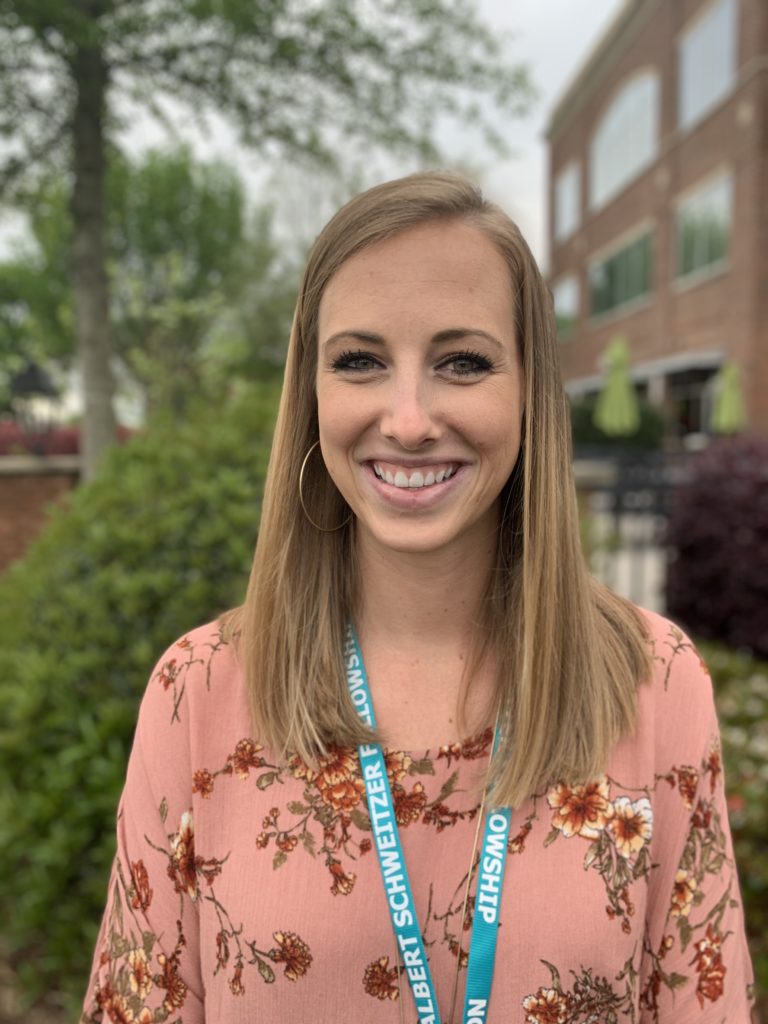The Daily Reflector, page A4, Greenville, NC
January 19, 2020

2019 NC Schweitzer Fellow
It seems that everyone knows about the opioid crisis. Though a wide variety of interventions have been purposed and some implemented, the problem remains larger unsolved
As many as 40 percent of all U.S. opioid-related deaths involve an opioid medication prescribed to patients as part of their care plan. There is at least one promising remedy, but it requires cooperation of patients, insurance companies, policy makers and health care professionals. The collective cooperation of those stakeholders is the challenge.
Physical therapy is a safe and effective solution to improve function and decrease pain without the side effects opioids cause. As health care professionals work to become more interdisciplinary, I have learned from my physical therapist colleagues and my patients that while physical therapy is the first recommended option by physicians for acute and chronic musculoskeletal pain relief, it is often underutilized. PT is cheaper than surgery and avoids the adverse effects of opioid medications. Chief among these are sedation respiratory depression and addiction.
The drugs’ high levels of addiction result from opioids flooding the brain with an excess of the neurotransmitter dopamine, which is the main neurotransmitter involved in the reward pathway. Opioid users continue to use opioids to repeatedly achieve the level of pain relief and euphoria that they can’t find elsewhere. Repeated use of opioids causes the brain to stop creating these neurotransmitters naturally, so the only way to reach this level of pain relief again is by their continued use. However, with repeated use, tolerance builds, leading patients to increase their dose to reach the same level of pain relief. The increasing dosages lead first to sedation, then to respiratory depression, which is responsible for almost all opioid deaths. So why are opioids still prescribed so frequently and as first-line treatment for chronic pain? Regulations have been written to limit opioid prescribing, but the problem remains largely unsolved. PT is a safe and effective solution to improve function and decease pain, without the side effects opioids cause.
The #choose PT campaign has become popular through the media, but additional support from policymakers is required. Numerous studies have shown the efficacy of physical therapy for pain management, and as a solution to help end the opioid epidemic, but most insurance companies are far behind on this campaign.
It is common for patients to discontinue PT due to limited insurance coverage even though the therapy was helping with pain and improving quality of life. Medicare previously limited physical therapy sessions, but no, if it deemed medically necessary, it is covered. Insurance carriers are behind on this methodology, with some insurance plans only covering up to five session, while the average outpatient course of care is seven to 10 sessions at a minimum.
In the long run, providing insurance coverage for more physical therapy sessions will leave a lasting mark on ending the opioid campaign. It is our job to advocate for these changes to our insurance companies and health care policymakers. Let’s do our part to help end the opioid crisis and advocate for this important policy change.
Camille Bauer is a second-year medical student in the Brody School of Medicine at East Carolina University and a 2019-2020 NC Albert Schweitzer Fellow. She is from Charlotte.
